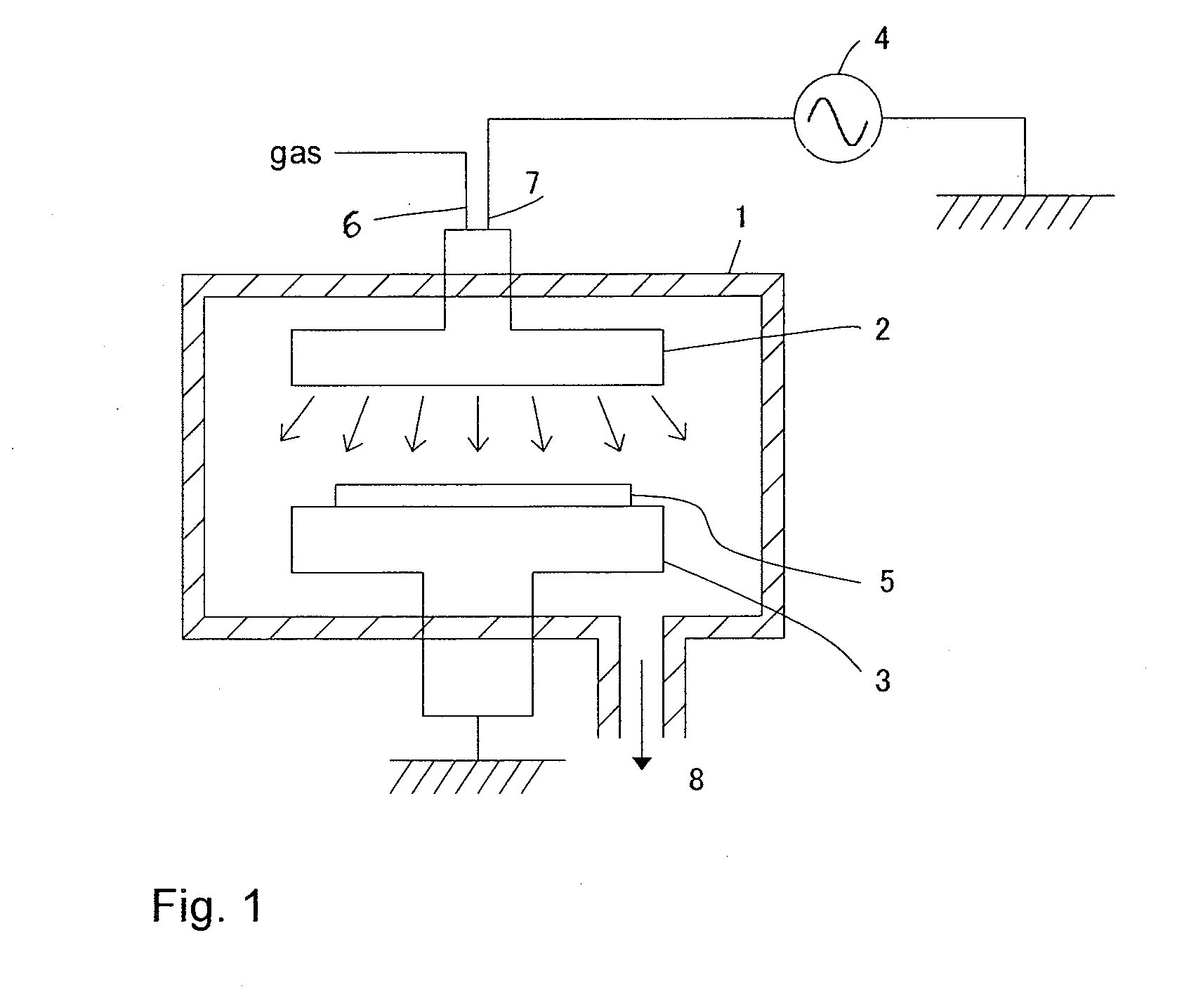Method for increasing mechanical strength of dielectric film by using sequential combination of two types of UV irradiation
a dielectric film and mechanical strength technology, applied in the field of uv processing of lowk (low dielectric constant) film, can solve the problems of reducing the improvement of mechanical strength, reducing reducing so as to improve the porogen removal effect, improve the mechanical strength of the film, and reduce the dielectric constant of the film
- Summary
- Abstract
- Description
- Claims
- Application Information
AI Technical Summary
Benefits of technology
Problems solved by technology
Method used
Image
Examples
examples
[0053]The present invention is explained below using examples. It should be noted, however, that the present invention is not limited to these examples. In the following examples, the specific values can be changed within a margin of approx. ±50%.
[0054]A low-k film was formed using the film forming apparatus illustrated in FIGS. 1 and 3 under the conditions specified below. Here, the film composition used for curing was an uncured low-k film formed in a CVD reactor by adding a porogen to a siloxane precursor.
[0055]Material gas: DEMS (diethylmethylsilane)
[0056]Flow rate of material gas (DEMS): 0.5 g / min
[0057]Porogen gas: ATRP (alpha terpinene)
[0058]Flow rate of porogen gas (ATRP): 1 g / min
[0059]Other gases: He, O2
[0060]Flow rates of other gases (He / O2): 800 sccm / 50 sccm
[0061]Film forming temperature: 300° C.
[0062]Film forming pressure: 1,000 Pa
[0063]RF application (wavelength, output): 13.56 MHz, 1,000 W
[0064]Film thickness: 500 nm
[0065]Next, the film was processed using the UV irradi...
PUM
| Property | Measurement | Unit |
|---|---|---|
| Mechanical strength | aaaaa | aaaaa |
| Mechanical strength | aaaaa | aaaaa |
| Mechanical strength | aaaaa | aaaaa |
Abstract
Description
Claims
Application Information
 Login to View More
Login to View More - R&D
- Intellectual Property
- Life Sciences
- Materials
- Tech Scout
- Unparalleled Data Quality
- Higher Quality Content
- 60% Fewer Hallucinations
Browse by: Latest US Patents, China's latest patents, Technical Efficacy Thesaurus, Application Domain, Technology Topic, Popular Technical Reports.
© 2025 PatSnap. All rights reserved.Legal|Privacy policy|Modern Slavery Act Transparency Statement|Sitemap|About US| Contact US: help@patsnap.com



